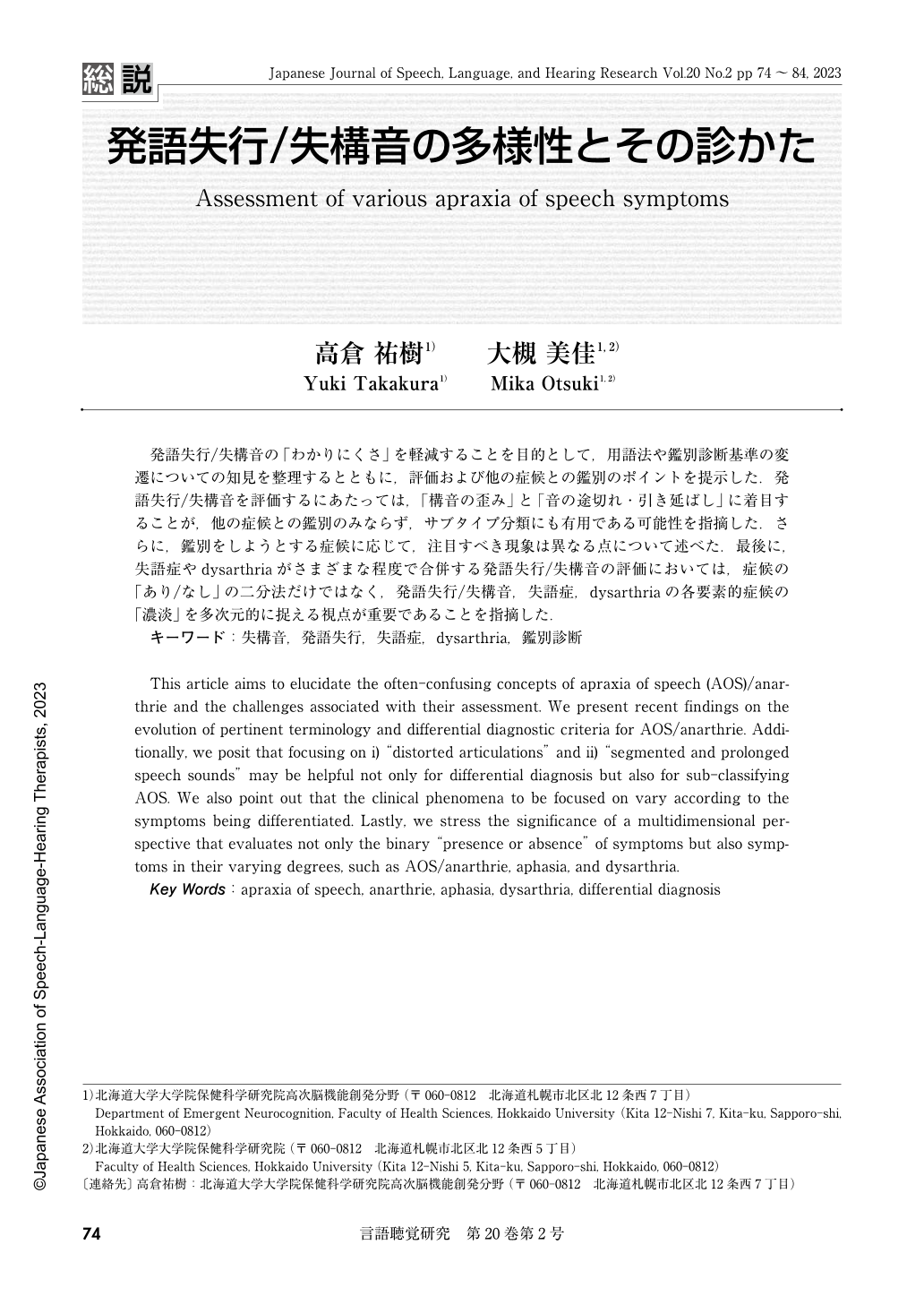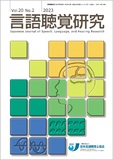Japanese
English
- 有料閲覧
- Abstract 文献概要
- 1ページ目 Look Inside
- 参考文献 Reference
- サイト内被引用 Cited by
発語失行/失構音の「わかりにくさ」を軽減することを目的として,用語法や鑑別診断基準の変遷についての知見を整理するとともに,評価および他の症候との鑑別のポイントを提示した.発語失行/失構音を評価するにあたっては,「構音の歪み」と「音の途切れ・引き延ばし」に着目することが,他の症候との鑑別のみならず,サブタイプ分類にも有用である可能性を指摘した.さらに,鑑別をしようとする症候に応じて,注目すべき現象は異なる点について述べた.最後に,失語症やdysarthriaがさまざまな程度で合併する発語失行/失構音の評価においては,症候の「あり/なし」の二分法だけではなく,発語失行/失構音,失語症,dysarthriaの各要素的症候の「濃淡」を多次元的に捉える視点が重要であることを指摘した.
This article aims to elucidate the often-confusing concepts of apraxia of speech (AOS)/anarthrie and the challenges associated with their assessment. We present recent findings on the evolution of pertinent terminology and differential diagnostic criteria for AOS/anarthrie. Additionally, we posit that focusing on i) “distorted articulations” and ii) “segmented and prolonged speech sounds” may be helpful not only for differential diagnosis but also for sub-classifying AOS. We also point out that the clinical phenomena to be focused on vary according to the symptoms being differentiated. Lastly, we stress the significance of a multidimensional perspective that evaluates not only the binary “presence or absence” of symptoms but also symptoms in their varying degrees, such as AOS/anarthrie, aphasia, and dysarthria.

Copyright © 2023, Japanese Association of Speech-Language-Hearing Therapists. All rights reserved.


